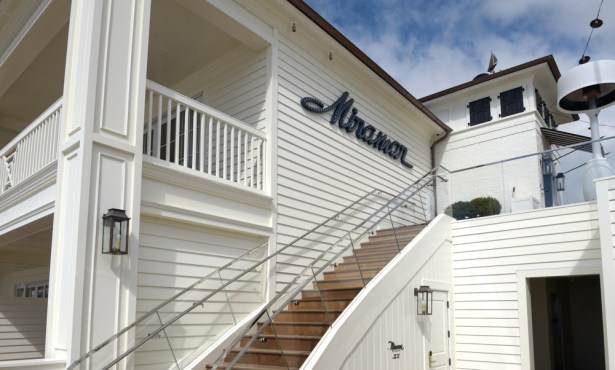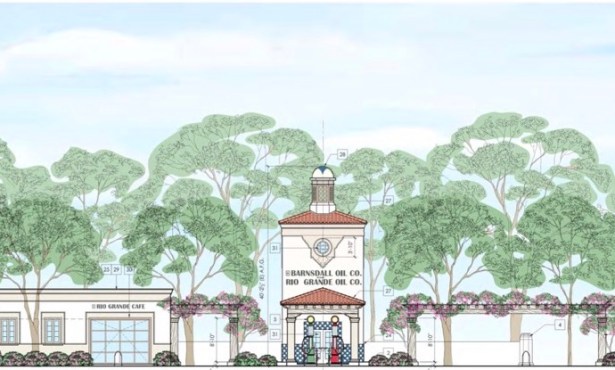Developer, Activists Strategize for Future of Gaviota Coast
The Naples Chess Match

Contrary to popular opinion, Matt Osgood is not the boogeyman. A handsomely middle-aged, affluent, Range Rover-owning, cowboy-boot-wearing Lakers fan who prefers the fresh air of Santa Barbara’s foothills to the hustle of his native Newport Beach, Osgood is like many who are trying to call the 805 home these days. Save for one potentially damning detail, of course: He wants to put dozens of large-scale luxury homes on one of the most untouched and cherished slices of oceanfront in Santa Barbara County.
For nearly a decade, Osgood-who bristles at the label “Orange County developer”-has been angling to build out the historic Naples Ranch at the easternmost gate of the Gaviota Coast, a feat that, despite massive public opposition, might become a reality before 2009. With the summer’s first heat wave just starting to smother the South Coast late last week in a steamy embrace, Osgood stood at the top of his now 1,085-acre property, surprisingly cool and confident despite the soaring mercury and the soon-to-begin county approval process for his ever-evolving and always controversial Naples vision. (Osgood originally owned just the 485-acre Naples township site, but strategically picked up an additional 600 adjoining acres last year in order to give his project more flexibility.)

Gesturing toward the patchwork of story poles dotting the rolling hills around him, the 16-foot red-and-white markers hinting at the latest incarnation of his development plan, Osgood said simply, “For the activists, I think this is about as good as it’s going to get.” He then added, in what those “activists” will surely take to be a thinly veiled threat, “We are at the point now where, one way or the other, something is going happen. People have to understand, I could start selling these lots today if I wanted to.”
In a series of financially taxing redesigns and land deals with Naples’s western neighbor, the Schulte family’s Dos Pueblos Ranch, Osgood has been refining his controversial development plan since he first entered into a Memorandum of Understanding (MOU) with Santa Barbara County in 2002. (Technically, there was an earlier MOU with the county that fell apart for various reasons prior to the 2002 arrangement, but that MOU was short-lived and called for a project vastly different from what is being proposed today.)
Previous Naples owner the Morehart Company fought a lengthy legal battle with the county that ended with a now 120-year-old map of the Naples property being ruled valid by the California Supreme Court in 1994. The map identified at least 233 legal lots at Naples, meaning Osgood has an ace up his sleeve in his dealings with the county. In short, if things don’t go his way during the approval process, he reserves the right to pull out of the MOU, revisit the litigation efforts against the county, and start sell ing the 200-some lots one by one to the highest bidder. “You can only hold onto a property for so long before you are forced to do something. And to be honest, after 10 years, there isn’t a single day now that I don’t think about it,” Osgood said, referring to the possibility of selling.
Currently, the MOU identifies two project options. The original calls for 54 homes on both sides of Highway 101 ranging in size from 3,700 to 13,000 square feet and spread out over 485 acres. Alternative One, which links the project to some estate planning at Dos Pueblos Ranch, results in a total of 72 similarly large luxury homes, 16 of which would be on the coastal terrace south of the 101. The homes would be spread over more than 3,100 acres, with 2,600 of those acres are permanently preserved as open space.
Alternative One was long preferred by the developer, key decision makers, and even to a lesser degree by project critics. That all changed earlier this month when Osgood unveiled what is now being called “Alternative Prime,” a supposedly more earth-friendly, viewshed-minded version of Alternative One that speaks directly to criticisms from the county’s Board of Architectural Review and Planning Commission. This new plan moves 14 homes planned for the inland side of Naples deeper into the property, rendering the majority of them invisible from the 101. Furthermore, Osgood has abandoned his millions of dollars worth of prior architectural designs for sprawling Mediterranean villas, replacing them with the markedly more green-minded work of Santa Barbara architect Barry Berkus. Explaining the significance of his presumably strategic redesign, Osgood said, “It’s a no-brainer now : If you are educated on the issues, I don’t know how anybody would not prefer Alternative Prime.”
Though they have yet to have the opportunity to fully digest the implications of Alternative Prime, members of the Naples Coalition-a group of stakeholder organizations, such as the Gaviota Coastal Conservancy, Sierra Club, Surfrider Foundation, and Citizens Planning Association, that are opposed to a McMansion invasion at Naples-are, according to chief counsel Marc Chytilo, less than impressed with what they’ve heard. (As of press time, coalition members, save for one, had not yet been able to inspect the new plan up close and in person, though, according to Chytilo, they have been asking since May.)
Admitting that he is, at the very least, “interested in seeing the plan up close,” Chytilo explained that for him and his constituents, the bottom line remains the same. “Our main objective has always been to get development off of the bluff,” he said, “And this new plan doesn’t do that at all, so, in that sense, our position hasn’t changed : There is just no way you can call it a good project with that many houses in a place as important as Naples.”
Furthermore, Chytilo said, the decision to shift a number of houses inland is more than just a viewshed-motivated move; it is also an act of gamesmanship, as it takes a number of the proposed homes out of the Coastal Zone and thus out of the jurisdiction of the California Coastal Commission-an entity that many have long felt will be a serious, if not potentially project-derailing, roadblock to Osgood’s plan. “At this point, we are definitely in the chess game phase of things,” Chytilo said.
To that end, it should also be noted that the Naples Coalition, which spoke optimistically about Alternative One when it was first unveiled in 2005, has now, to a degree, come out in favor of the original MOU, which calls for the greatest number of houses sited in the Coastal Zone-no doubt an argument born in a similar vein of Coastal Commission conscience gamesmanship.
Like all good chess games, the Naples controversy also has a time limit. The MOU establishes a timeline for the project’s eventual approval or disapproval, with the aforementioned Planning Commission entitlement hearings set to begin on June 30 and run, at the very least, into mid July. The MOU gives the Board of Supervisors four months after Planning Commission hearings begin to sign off on the project. Speaking to this established gauntlet of meetings, Osgood opined in late May in no uncertain terms, “Should it deviate too much, my historical patience [to not sell the lots individually] could definitely wear thin.” But, given the penultimate importance and unrivaled complexity of the issue, time is exactly what it is going to take to vet all the issues at the Planning Commission level-a process that has not yet even identified what development alternative they will explore in their final rulings.
And then there is the wholly separate matter of the Board of Supervisors. With Brooks Firestone’s 3rd District seat up for grabs this November and two outspoken critics of Naples development, Doreen Farr and Steve Pappas, vying for it, it becomes, at least on paper, even more imperative for Osgood to get the deal done before 2009 arrives and for the Naples Coalition to try to hold the line against approval until a new 3rd District supervisor has taken his or her seat.
When pressed late last week on the issue of opting out of the MOU and an ad hoc sale of antiquated yet legal lots, Osgood was coyer than he was in his earlier musings on the subject. “Sure, I could be tempted.” he said “But it is more complicated than that.” He then went into a lengthy explanation of the various challenges in building along the Gaviota Coast-the classic Santa Barbara conundrum of density, the individual and community
balancing acts one has to pull off when weighing wants against needs, and the frustration of being in a process that has lasted “twice as long as I ever thought it would.” But he concluded, nodding his head, his hands firmly at the wheel of his SUV as it crawled slowly down a sun-soaked hillside above Dos Pueblos Creek, “It’s absolutely a chess game.”



